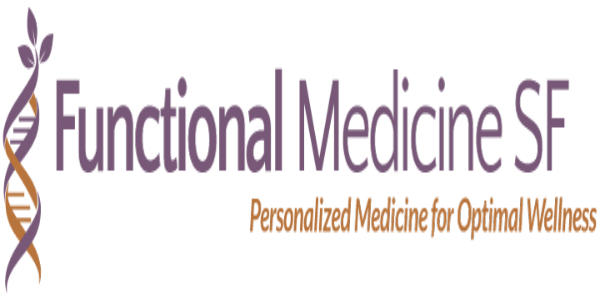Nicotinamide adenine dinucleotide
Today, medical science is advanced enough to offer a variety of treatments to deal with both physical and mental conditions. Biomedical research has changed the way we live. The progressive medicine revolution has swept the medical landscape with a variety of treatment options offering optimism, success and improved quality of life. Now people deserve to get the latest research-based scientific treatment capable of correcting disorders where traditional approach was confined to damage control. NAD Therapy is exactly that type of progressive medicine breakthrough, exciting for physicians and rewarding for patients looking to achieve optimal health.

WHAT’S IN NAD
Nicotinamide adenine dinucleotide
What is the Best Thing about NAD Therapy?
(*1*) – Most importantly, it is all natural, non-toxic, having no side-effects.
(*2*) – It can be safely administered as a protective agent (clinically proven as neuroprotective) for optimal brain health.
(*3*) – It can be used as a vital anti-aging factor to achieve high-standard fitness goals. NAD has the ability to significantly improve cell rejuvenation and cellular biogenesis.
Health Benefits Associated With NAD Therapy:
The spectrum of “NAD Therapy” as a treatment for chronic illnesses and brain health is broad. Therefore, a long list of benefits can be associated with the use of NAD. Particularly, NAD therapy has shown significant results in the area of mental health/brain rejuvenation.
Nicotinamide adenine dinucleotide (NAD) is the latest, holistic, trending and all-natural treatment approach to a wide range of disorders. NAD (Nicotinamide adenine dinucleotide) is a chemical/coenzyme credited to energy production for a number of vital organs, particularly the nervous system. Its wide range of utility in the human body also includes cell cure
reshaping gene expression and cell regeneration. NAD Therapy is an anti-aging therapy with the ability to resolve deficiencies in your body to ensure symptomatic relief, disease cure and improved health.
Common Benefits of IV NAD Therapy
Boost Brain Power
Patients who use NAD IV Infusion Therapy report feeling higher levels of focus and enhanced mental clarity
Anti-aging Effects
Research shows that IV NAD Infusions have an active role in the process of anti-aging
Improve Focus
Patients who use NAD IV Infusion Therapy report feeling higher levels of focus and enhanced mental clarity
Eliminates Fatigue
IV NAD Infusion promotes a higher cellular level of ATP, providing you the added benefits of higher mental and physical energy.
Reduce Your Pain
IV NAD Infusions have shown in studies to reduce pain. This treatment is a wonderful choice to live without pain.
– To improve Memory, Alertness, Mental clarity & Concentration
– To treat Degenerative Disorders of the Central Nervous System
– To treat/improve symptoms of Parkinson’s disease, Migraine, Dementia & Cognitive decline
– To reduce signs of Aging
– To treat Neuropathic pain & promote healing
– To improve Liver health
– To treat Mitochondrial dysfunction
– To reduced risk of Blood vessel damage in Diabetic Patients
– As a supplement to replace often toxic medications (which often have multiple side-effects)
– To improve Athletic Endurance
– To improve the function of the Immune System
– To treat CFS (Chronic Fatigue Syndrome)
– For increased Energy production and (Testosterone hormone — can’t verify source).
– To reduce/control Jet leg, High blood pressure, High cholesterol & Depression.
Cognitive & Neurological Benefits of NAD Therapy:
Life is like a marathon. We might feel like we’re dying with thirst and in desperate need of a bottle of water. All our cells are constantly working and need sufficient fuel just like a bottle of water when we are thirsty. When our cells cry for energy, NAD can fulfil that thirst and provide the brain a major boost with necessary nourishment. NAD acts at the cellular level to initiate brain recovery and thus it helps to improve:
– Brain aging (cognitive decline)
– Age-related Degenerative Nerve Disorders (e.g. Friedreich’s ataxia, Spinal muscular atrophy and Parkinson’s disease)
– Brain functions
– Neurological disorders (e.g. brain injury, brain tumor and bipolar disorder).
Ultimately, the brain recovery will manifest as increased memory, alertness, mental clarity and concentration. Addiction is another kind of brain disorder where the use of NAD can be useful. NAD infusion will naturally trigger the brain recovery process to lower the symptoms associated with addiction. Recently, a lot of clinicians and patients are reporting notable improvements in their symptoms while using NAD as a complementary treatment for addiction.
Anti-Aging Benefits of NAD Therapy:
The scope of therapeutic use of NAD is widening day by day with multiple mechanisms of action. Aging is a time-dependent progressive decline in biochemical and physiological functions characterized by physical and cognitive impairment. The increasing scientific evidence for the role of NAD IV treatment in slowing the aging process has led to several clinical trials. Latest clinical evidence has shown that oxidative stress plays a crucial role in the aging process and in several degenerative diseases including Alzheimer’s disease, cancer, diabetes, and chronic inflammation. NAD’s therapeutic properties mainly originate from its mediating role in many redox reactions (oxidation-reduction). Reduced oxidation limits the process of aging and promotes long-term overall health.
At the “Systemic level” NAD is known to improve communication between adipose tissue and hypothalamus, and increase interaction among mitochondria and nucleus at the “Cellular level” to fight longevity and aging factors.
Another profound effect of NAD related to anti-aging is DNA protection and regulating inflammation. Increased inflammation with age can damage cell structure/DNA and promote cell death. In this case, NAD can be a superhero for cells with the power of correcting and preventing DNA damage. In fact, the use of NAD becomes even more important with increasing pollutants in our environment and inflammatory foods in our diets, threatening our well-being with extravagant oxidation and inflammation.
NAD Pricing
NAD 250
$550NAD 500
$750NAD 750
$995NAD 1000
$1200


